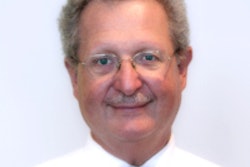Dear AuntMinnie Member,
Sonographer Doug Wuebben is back with the latest column in his Making a Difference as a Sonographer series, this time on how ultrasound specialists can avoid overuse problems with the iliotibial band.
Iliotibial band syndrome (ITBS) is a common overuse injury for runners, but it is also seen in sonographers. The iliotibial band is a ligament that runs down the outside of the thigh from the hip to the shin, and it can become tight or inflamed if one's leg isn't supported adequately during scanning.
While the best treatment for ITBS is typically rest, this often isn't realistic for most sonographers. Therefore, Mr. Wuebben and co-author Mark Roozen offer a series of exercises that sonographers can perform to reduce the effects of the syndrome.
Learn more by clicking here, or visit our Ultrasound Community at ultrasound.auntminnie.com.
21T MRS offers stroke insight
Meanwhile, researchers led by a team from Florida State University have developed an MR spectroscopy (MRS) sequence using a 21-tesla nuclear MR magnet that provides fascinating details on the origin of stroke.
The technique analyzes metabolites in the brain using a relaxation-enhanced MRS technique that gives researchers the potential to see very small changes, such as those that might result from a stroke.
While their existing research has mostly been in the laboratory, they believe that the technique could be migrated to the clinical setting, where 3-tesla and in some cases 7-tesla MRI scanners are becoming increasingly common.
Learn more by clicking here, or visit our MRI Community at mri.auntminnie.com.
Radiation therapy payment parity
Sure, diagnostic imaging facilities have suffered significant cuts in Medicare reimbursement in recent years, but they are nothing compared with what's been levied on freestanding radiation oncology centers. These facilities have seen Medicare payments cut to the level where patient access to care is becoming an issue, according to an editorial opinion by Dr. Paul Wallner, senior vice president of 21st Century Oncology.
Mr. Wallner believes that freestanding oncology centers have borne an unfair burden in absorbing payment cuts, and they are now receiving lower Medicare payments than hospital-based radiation oncology facilities. Freestanding centers perform an important service and are often located closer to patients.
Read Mr. Wallner's thoughts on reimbursement for freestanding radiation oncology by clicking here, or visit our Imaging Leaders Community at leaders.auntminnie.com.



















